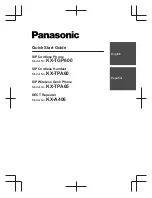
18
Never use damaged or incorrect blade wash-
ers or bolt.
The blade washers and bolt were specially
designed for your saw, for optimum performance and
safety of operation.
Kickback causes and related warnings
– Kickback is a sudden reaction to a pinched, bound or
misaligned saw blade, causing an uncontrolled saw to lift
up and out of the workpiece toward the operator;
– When the blade is pinched or bound tightly by the kerf
closing down, the blade stalls and the motor reaction
drives the unit rapidly back toward the operator;
– If the blade becomes twisted or misaligned in the cut,
the teeth at the back edge of the blade can dig into the
top surface of the wood causing the blade to climb out of
the kerf and jump back toward the operator.
Kickback is the result of saw misuse and/or incorrect oper-
ating procedures or conditions and can be avoided by
taking proper precautions as given below.
Maintain a firm grip with both hands on the
saw and position your arms to resist kickback
forces. Position your body to either side of the
blade, but not in line with the blade.
Kickback
could cause the saw to jump backwards, but kickback
forces can be controlled by the operator, if proper precau-
tions are taken.
When blade is binding, or when interrupting a
cut for any reason, release the trigger and
hold the saw motionless in the material until
the blade comes to a complete stop. Never
attempt to remove the saw from the work or
pull the saw backward while the blade is in
motion or kickback may occur.
Investigate and
take corrective actions to eliminate the cause of blade
binding.
When restarting a saw in the workpiece, cen-
tre the saw blade in the kerf and check that
saw teeth are not engaged into the material.
If
saw blade is binding, it may walk up or kickback from the
workpiece as the saw is restarted.
Support large panels to minimise the risk of
blade pinching and kickback.
Large panels tend to
sag under their own weight. Supports must be placed
under the panel on both sides, near the line of cut and
near the edge of the panel.
Do not use dull or damaged blades.
Unsharp-
ened or improperly set blades produce narrow kerf caus-
ing excessive friction, blade binding and kickback.
Blade depth and bevel adjusting locking levers
must be tight and secure before making cut.
If
blade adjustment shifts while cutting, it may cause binding
and kickback.
Use extra caution when sawing into existing
walls or other blind areas.
The protruding blade
may cut objects that can cause kickback.
Lower guard function
Check lower guard for proper closing before
each use. Do not operate the saw if lower
guard does not move freely and close
instantly. Never clamp or tie the lower guard
into the open position.
If saw is accidentally
dropped, lower guard may be bent. Raise the lower
guard with the retracting handle and make sure it moves
freely and does not touch the blade or any other part, in
all angles and depths of cut.
Check the operation of the lower guard spring.
If the guard and the spring are not operating
properly, they must be serviced before use.
Lower guard may operate sluggishly due to damaged
parts, gummy deposits, or a build-up of debris.
Lower guard may be retracted manually only
for special cuts such as
“
plunge cuts
”
and
“
com-
pound cuts
”
. Raise lower guard by retracting
handle and as soon as blade enters the mate-
rial, the lower guard must be released.
For all
other sawing, the lower guard should operate automati-
cally.
Always observe that the lower guard is cover-
ing the blade before placing saw down on
bench or floor.
An unprotected, coasting blade will
cause the saw to walk backwards, cutting whatever is in
its path. Be aware of the time it takes for the blade to stop
after switch is released.
Additional safety warnings
Do not reach into the chip ejector with your
hands.
They could be injured by rotating parts.
Do not work overhead with the saw.
In this man-
ner you do not have sufficient control over the power tool.
Use appropriate detectors to determine if util-
ity lines are hidden in the work area or call the
local utility company for assistance.
Contact with
electric lines can lead to fire and electric shock. Damaging
a gas line can lead to explosion. Penetrating a water line
causes property damage.
Do not operate the power tool stationary.
It is
not designed for operation with a saw table.
Do not use high speed steel (HSS) saw blades.
Such saw blades can easily break.
Do not saw ferrous metals.
Red hot chips can ignite
the dust extraction.
OBJ_BUCH-3291-001.book Page 18 Friday, September 8, 2017 12:22 PM








































